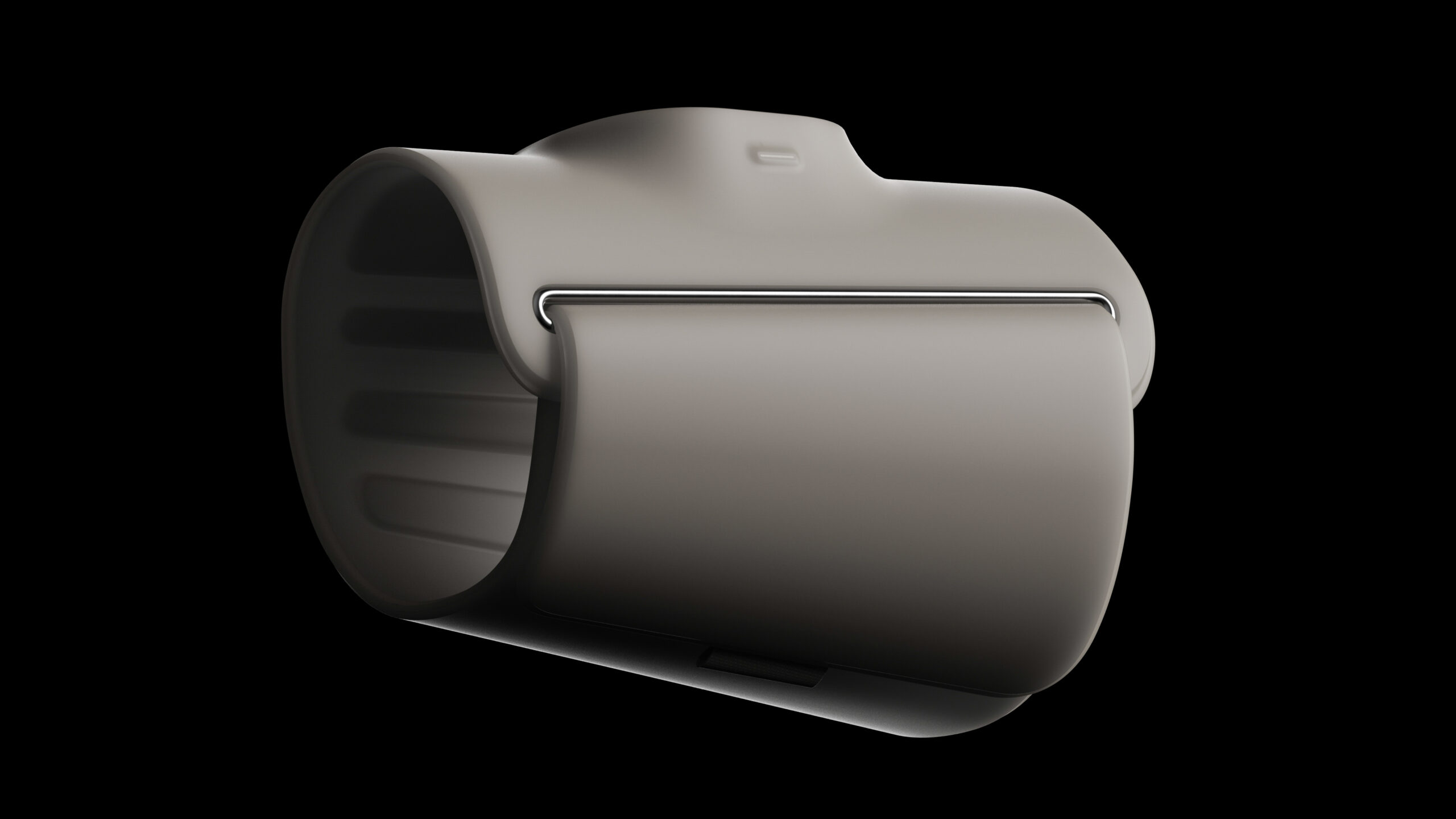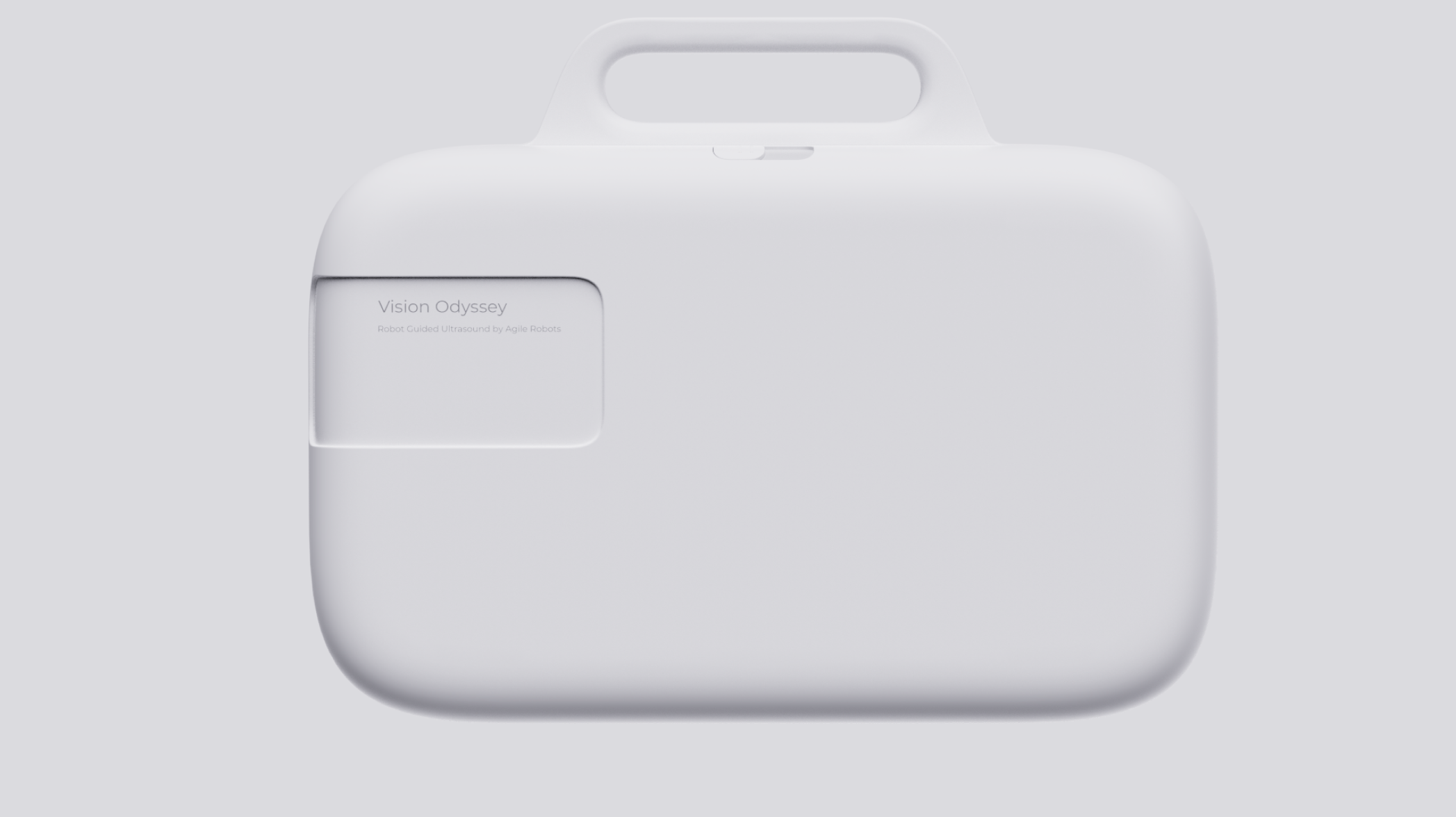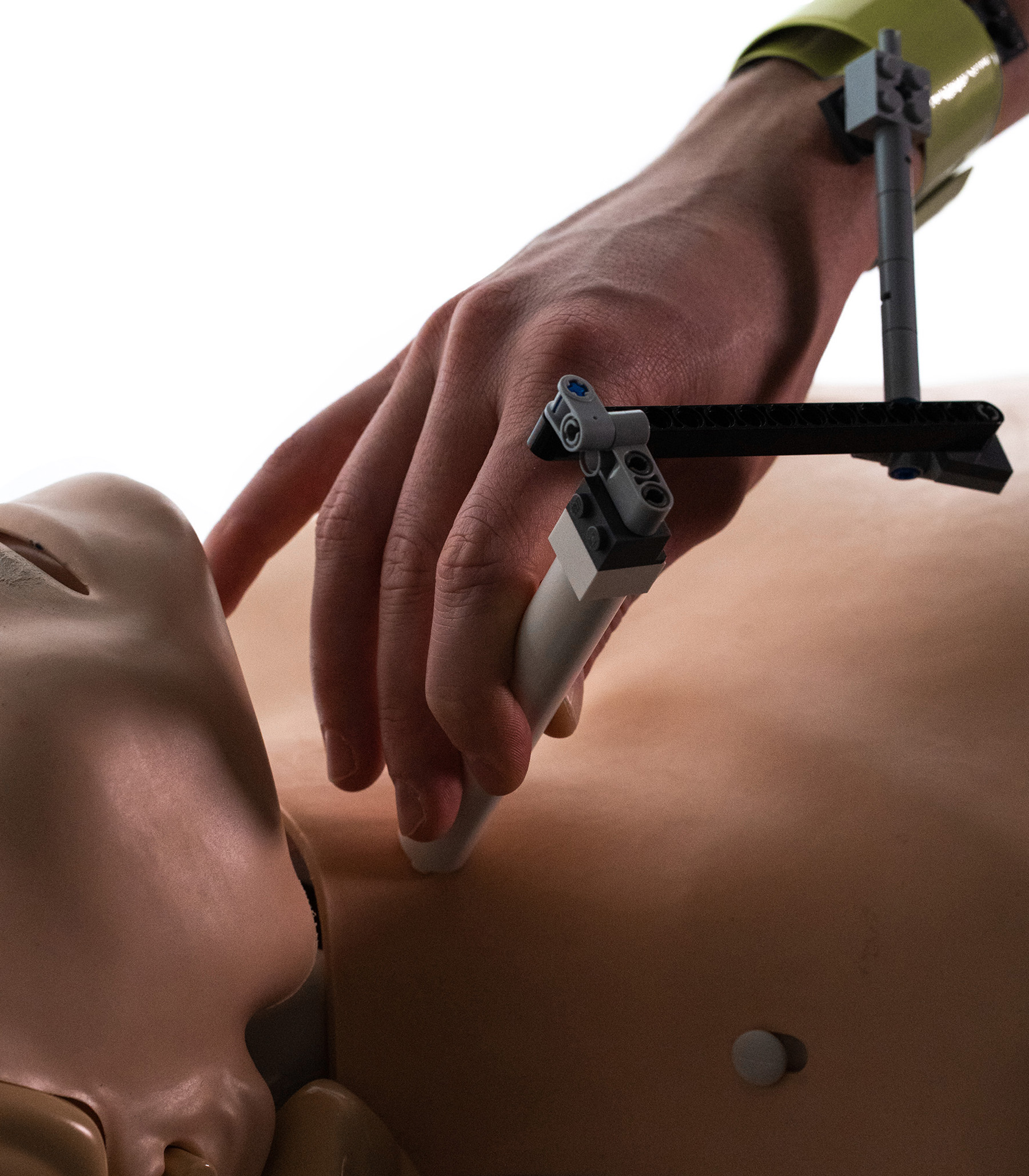VISION ODYSSEY
Team: Erik Ivarson
Collaboration Partner: Agile Robots
2023 – 8 weeks
By 2030, the estimated global shortage of health workers is 18 million across all qualification levels. The shortage of healthcare professionals (HCPs) qualified to perform ultrasound imaging leads to long referral times.
The long wait for ultrasound imaging has resulted in acute surgeries, even before the ultrasound referral was due.
Vision Odyssey is designed to enable ultrasound imaging to be introduced earlier in the diagnostic journey and performed by HCPs without previous ultrasound training. Already at health centers, HCPs can perform ultrasound imaging immediately before referring patients.
Vision Odyssey supports by guiding the HCP to cover the full area of search and stabilizes to capture normal and abnormal recordings. The collected data is then shared with a specialist who concludes a diagnosis or requests further imaging, blood tests or biopsy.
“At health centers, Vision Odyssey can for example be used to exclude that limited blood circulation is the underlying cause for leg ulcer, detection of deep vein thrombosis (DVT) and abdominal aortic aneurysms (AAA).”
-General Practitioner, 17 years of experience.
Industrial Design
Interaction Design
3D modelling
Rendering
Animation
Prototyping

Since ultrasound is high competence driving technologies, the users can’t read and interprete the imagine, it’s like searching for a clue in the darkness, you need some guidance.
The interface is guiding you thank to an arrow that is pointing where you should move the device.
Once you’re in the right location, the arm is auto adjusting the signal thanks to the real-time AI that is reading the images. When it’s done you can move on to the next zone.
One main challenge was keeping a soft transition between the joins and the arm since this device is close to the user’s skin. And at the same time keeping the degree of freedom we need to achieve all the movement the endeffectors need to execute.
This was the most intense phase going back and forth with mechanical prototypes and 3D prints.
The wristband can be secure in place with the Velcro attachments, ensuring stability. The added rigidity facilitates smooth insertion into the steel buckle. The volumes allow for proper ventilation when the product is in use. Notably, the primary volume beneath the robot serves as a dual-function battery and a robust supportive structure for the wrist. Lastly, the robot can be effortlessly locked in the base older and released with the button mechanism.
The connection between the head of the device and the end effectors is secure and can be operated with one hand. It is similar to the camera's connectors that mechanically lock the two bodies together, providing haptic feedback.
Start the diagnostic process by inputting key patient details such as name, age, and gender.
As you delve into discussing symptoms, the AI steps in to assist in recognizing and documenting these symptoms and streamline the information-gathering process.
Choose the specific area for ultrasound screening, and let the interface be your guide, ensuring a smooth and intuitive experience.
Ultimately, the user shares the preliminary findings obtained from image interpretation. These results are communicated to a specialist who determines the case's urgency.
It's essential to note that the robot doesn't replace human decision-making; instead, it assists and relieves healthcare professionals by expediting the diagnosis phase. The final decision rests with the human.


















